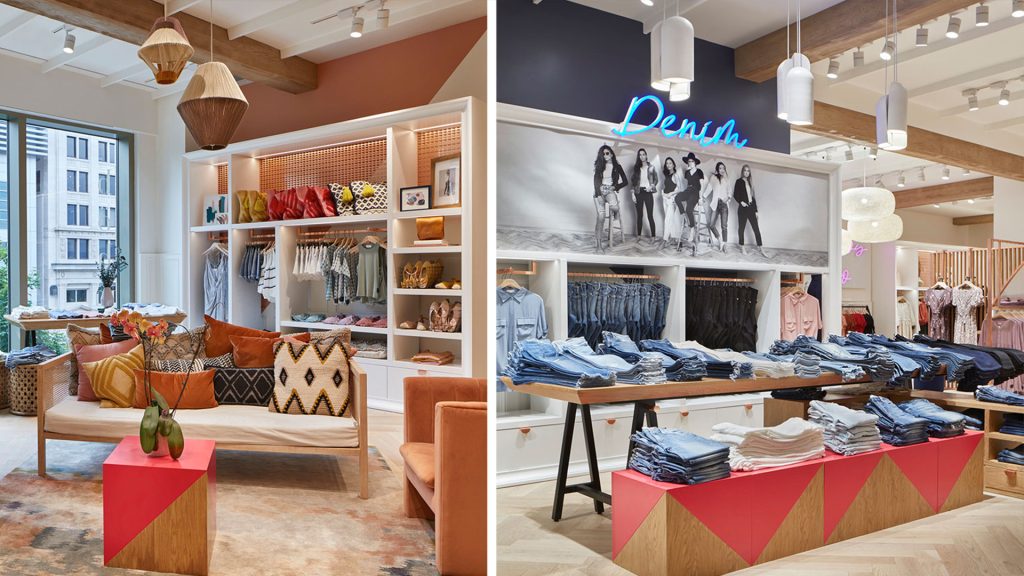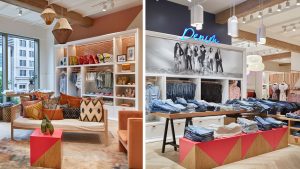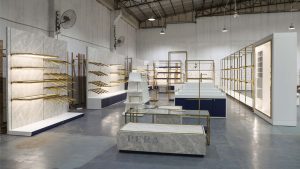
Luxury retail brands like Louis Vuitton, Hermès, and Fendi are increasingly turning their attention to the Chinese market. These international giants are enhancing their local store furnishings and supply chains in China. They’re expanding into multiple cities, seeking capable local suppliers, and blending global architectural concepts with Chinese shopfitting trends to conquer the Chinese market. While well-established brands that set up shop in China back in the 1990s have solid strategies for expanding their brick-and-mortar networks, new retail entrepreneurs looking to make their mark can start with these useful tips:
1. Search for Reliable Chinese Suppliers
Begin your journey by seeking qualified Chinese suppliers from a variety of sources. Look for suppliers that meet these criteria:
- Over a decade of experience
- Specialization in complete store display solutions
- Locally based in regions that align with your store expansion plans
- Experience in collaborating with international brands
Remember to explore at least five suppliers and use diverse methods like Google, trade fairs, social media, and industry contacts for your search.
2. Use a Dedicated Communication App
Chinese store display and shopfitting suppliers are quite assertive in their sales efforts. To maintain focus during your investigations, it’s advisable to use a “work email + new instant messaging” approach. WeChat is a highly recommended instant messaging app, widely used by the Chinese population.
3. Request Essential Legal Documents
For a smooth store planning process in China, it’s vital to collaborate with a legally compliant Chinese shopfitting company. Ensure that they provide you with necessary documents, including:
- A scanned copy of their Business Registration Permit (营业执照)
- Visual proof of their office and factory facilities
- Documentation of specific project cases, including samples, manufacturing processes, quality inspections, and actual store installations
Bonus points if they possess additional certificates such as FSC, BSCI, CE, UL, or ISO9001/9002, which are highly regarded in the Chinese shopfitting industry.
4. Plan a Trip to China
Schedule a 7-10 day visit to meet your potential display suppliers. Tour their offices and factories, engage with their team, and assess their production management. In-person experiences provide a realistic view of their capabilities. It’s a good idea to have a companion, whether from your team or a trusted third-party inspector.
5. Don’t Hesitate to Ask for Samples
It’s perfectly acceptable to request samples from Chinese suppliers. They are often willing to assist, but be aware that they might attach conditions, such as a sample fee (which may be refundable). If you’re ambitious about opening stores in China, let them know, and they might even provide you with a display shelf or cabinet sample for free.
OK. Do you have a rough image about how to choose shopfitting supplier for your Chinese stores planning? I believe so. Of course we have much more to share on this topic. Please stay tuned for 10 Essential Tips for Store Planning in China – Vol.2 ,where you will know some of the usual tricks of the Chinese shopfitting suppliers.
Introduction of Arcular Design Studio
Founded by Van Zhang in 2007, Arcular Design Studio is a leading Australian commercial space designer and builder with over 10 years of experience. Specializing in projects across various industry sectors, including retail, hospitality, workplace, and residential, Arcular has established itself as a go-to choice for clients of all scales. With a commitment to innovation and quality, Arcular continues to push the boundaries of commercial space design.



